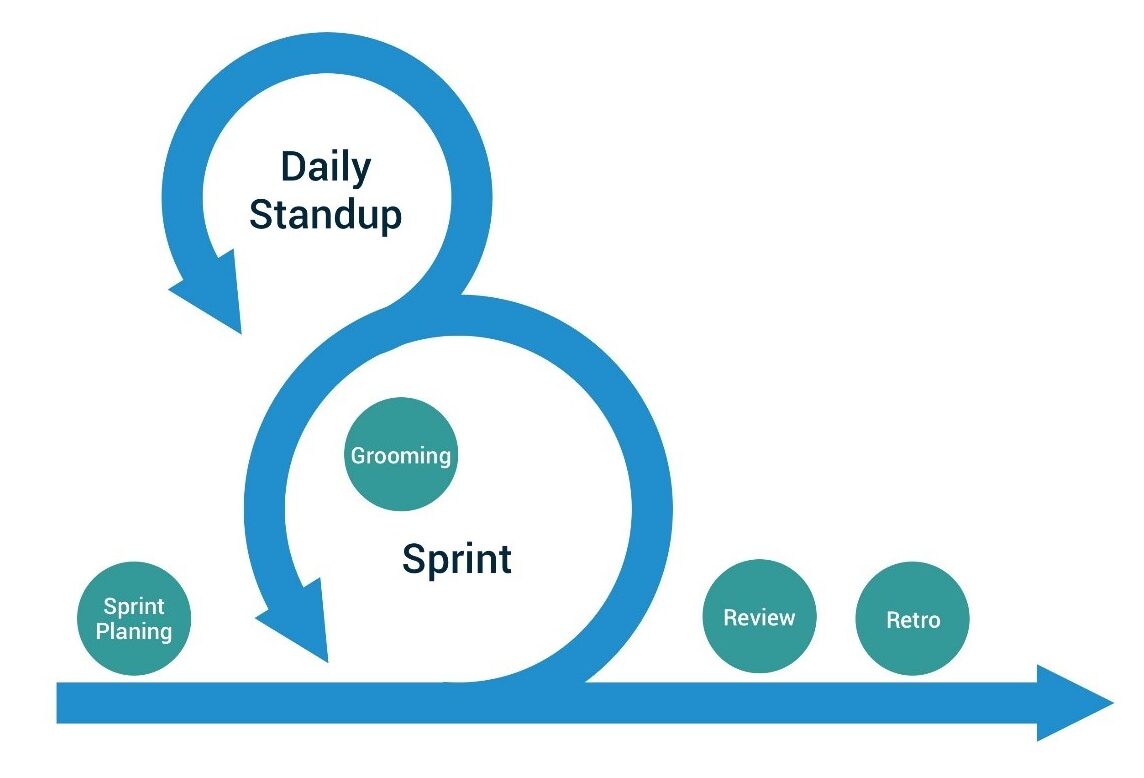Think Agile, Act like a Scrum
Hi everyone👋, today our Project Manager Ani will talk about Agile Methodology. She will share some examples with you, which will help to manage effectively your daily tasks and meetings.
To be Agile and to think Agile is a prerequisite for staying competitive and working more effectively. Its very name suggests that this methodology is based on flexibility. Agile thinking is applicable in almost all fields, but especially the application of the latter in the IT field is quite crucial, which revolutionized the traditional views of the people and showed that customer satisfaction can be achieved through early and continuous delivery of the valuable product. 
We live in an ever-growing complex world and we must be flexible enough to adapt to modern changes and always be competitive. The Waterfall approach, the applicability of which was due to the existence of all the clear requirements from the beginning of the project, could not resist forever, as nowadays all the requirements of the project are not clear from the beginning of the project and are subject to change due to many factors. There was a need for a new approach that could help organizations be more resilient, responsive to change.
That is why on February 11-13, 2001, 17 interns met at UTAH and came up with Agile ‘Software Development’ Manifesto with its 12 core principles. Agile Manifesto was focused on giving significance to collaboration with clients, client involvement in the project, response to change and working product.
Let’s take an example: we have to build a wardrobe.
If we decide to build it using the waterfall approach, we will start by defining the requirements (it may last weeks, months) then we will start to build parts. As customer involvement is too little, and they are not receiving anything during first phases, in the end the customer might say that this is not the wardrobe they were expecting. Instead, if we build the furniture in an agile methodology, we will build products incrementally and iteratively, we will involve the customer on a regular basis and we will ask them for feedback while building the wardrobe starting from MVP and therefore, we will end up having a satisfied and happy customer.
Okay, now let’s speak about Scrum. A question occurs, what is Scrum?
According to Scrum Guide, it is a framework within which people can address complex adaptive problems, while productively and creatively delivering products of the highest possible value.
Nowadays, many organizations prefer Scrum because it has a well-defined sequence of events (Sprint, Sprint Planning, Daily Scrum, Sprint Review, Sprint Retrospective), clear role distribution (Product Owner, Development team, Scrum Master) and artifacts (Product Backlog, Sprint Backlog, Increment).
It may seem that dividing a large amount of work into certain small parts, defining certain breaks in the latter will be less challenging to achieve.
Let’s take an example from our own lives:
Suppose we have to pass an exam at the end of the semester. We have 10 days left and we should practice without interruption in order to learn a huge amount of material for the whole semester. As a result, we will be exhausted, we will not learn the material effectively and we will forget everything immediately after the exam. But what if we divide the studied material into weeks, from the beginning of the semester. Let’s assume if I study one chapter every 2 weeks, I will obediently complete my practical tasks, which will then be checked by professor and I will get feedback. I will correct my mistakes accordingly and 10 days before the exam will only summarize the work done.
In the second case, it is expected, that the result will be higher, I will not get tired and I will improve my knowledge based on the results of the feedback received. In my view, applying this example in everyday life reflects the presence of Scrum in our lives. It can be ultimately summarized that by dividing any major task into quality sprints, scrambling and receiving constant feedback, we can argue that in the end we will get better and more efficient results.
Of course, with a strong desire, this material could be studied in 10 days, but will we achieve the same results?
Thanks Ani for giving us such a useful information😊
Read also:
Companies can’t operate long-term activity without having a strong Brand Management
BeeWeb Earns a Clutch Award for Stellar Web Design Services in Armenia